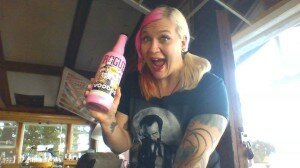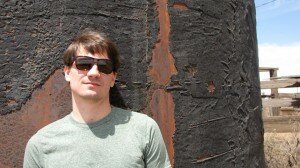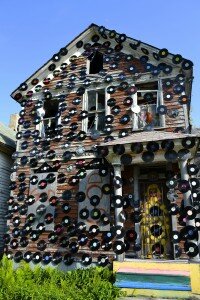A Labor and a Language of Love
(or, What Are You Gonna Do with that Humanities PhD?)
Once upon a time, before I was a nurse and a student midwife, I went to graduate school with a very different goal in mind: a PhD in English. Fresh out of undergrad, with vague ideas about feminism and about changing the world, a love of books, and precious few ideas about what I could do with my degree, I left the city in which I’d spent my entire life and moved to California to become an academic. Many things changed while I was in grad school– I met new people and lost touch with others, I got married, I had two daughters– but others remained the same– I still considered myself a book-loving feminist, and I still wanted to change the world. And by the time I was in the dissertation phase, I had a good idea of what I wanted to do with my degree; the problem was I was going to have to earn yet another one to accomplish it.
Pregnancy, childbirth, and new motherhood left profound marks on me, ones which gave me a sense of purpose and direction I’d always lacked. It’s not that I just loved being pregnant (though it wasn’t so bad), really, or that childbirth was a walk in the park (quite the opposite); but I learned so much about myself during this time, and perhaps more importantly, about the ways in which American women become mothers. I started my first daughter’s pregnancy with an obstetrician who had been assigned to me by my school’s health plan. I thought she was fine, though I was frustrated each visit by her (and her staff’s) inability to tell me anything concrete about what birth would be like. What would my room be like? What options would be available for pain control and relaxation aside from epidurals? How much would my co-pay be? I was shut down at every turn, because it was apparently too soon to consider such questions. This didn’t sit right with me; the day I birthed my daughter was going to be one of the most significant days of my life. Surely it was reasonable for me to want to plan for it ahead of time!
To make a long story short, we left the OB. There was a lot of thought, research, and debate involved, but looking back it almost feels providential; one day I had assumed midwives were a thing of the nineteenth century, and the next I was planning a birth at home. To make an even longer story short, my first child ended up being born in a hospital–with a midwife, and almost every single intervention I’d hoped to avoid. It took time for me to completely come to terms with that outcome, but needless to say, her birth day was the happiest day of my life to that point, epidural and all.
Though it was not the low-tech waterbirth I’d imagined, my first baby’s birth taught me so much, and challenged many of the assumptions I’d held. Having experienced the gamut of obstetrical interventions, as well as the absolute ecstasy of meeting my daughter, I realized that these experiences were not mutually exclusive. What seemed to matter more than anything was how supported a woman felt while she was experiencing birth; and as some of my more dogmatic views began to fall away, I realized that a beautiful birth could happen in an abundance of settings, from a birth tub to an operating room– provided that the birth attendants treated the process, and the family, with nothing short of reverence.
Sadly, this is often not the case in American maternity care. One in three babies are delivered surgically, and it’s not because women are banging down the door for cesarean sections. While I fully support a woman’s right and ability to choose a c-section as her preferred mode of birth, I do not feel the same about many providers’ tendencies to rush the process for reasons that often have little to do with the health of mother or baby. And beyond that, I certainly cannot get down with the tendency in maternity care to treat women like mere vessels for reproduction. The birth of a baby is also the birth of a mother; it’s high time we honor that fact. A woman should not have to flee the medical setting to retain her dignity and human rights, but as a result of a frightening confluence of legislation and trends in medical practice (and, to be fair, malpractice, as litigation has an unfortunate effect of practice regardless of evidence), this has, for many women, become a reality. And it was here, at the intersection of a patriarchal medical establishment and an increasingly conservative legislative environment that seeks to constrain more and more what can constitute women’s health care, that I found my calling: I was born to be a midwife. And in spite of the fact that I had planned two homebirths and experienced one (the other best day of my life), I was going to follow my calling right to the place I’d sworn I’d never go when I was pregnant: the hospital.
Sometimes, when I explain the (admittedly unique) trajectory of my career path, I hear something along the lines of, “So you’re not going to use your English PhD?” This question, which often feels like a tacit criticism of my inability to decide what I want to do with myself within an appropriate timeframe, bothers me because it implies that the value of my education lies only in the job it entitles me to get, and, implicitly, that there’s no place for the humanities within the medical world. Such comments reflect deeply held, but rarely interrogated, biases about what kinds of education are worth pursuing and what it means to put one’s education to work in the world.
It would be easy to respond by saying, “No, teaching wasn’t really for me” (which would be a lie), or by decrying the current state of the academic job market for humanities PhD (which is a sad truth, but was not the primary reason I left academia). And I confess, rather shamefully, that I’ve gone down both of these roads before. But the more honest answer is that I am absolutely going to “use” my English PhD– or rather, what I learned to do while in pursuit of it– “forever til the day I die” (to quote a nursing instructor of whom I am particularly fond).
As both a nursing student and a patient, I have encountered repeated instances of clinicians and other health professionals using strikingly inappropriate language to talk to and about the people they are caring for. This is especially true in women’s health, a field that is positively rife with, for lack of a fancier term, bad language. Let’s begin with a seemingly benign example. When a baby is born, we often describe him or her as having been “delivered.” This paradigm has become a commonplace, but what do we really mean when we say “delivered”? Delivered from what? Evil? What are we actually talking about when we use the words “delivery” and “deliverance”? The postal service? Or something more transcendent? Despite the mysterious referent, the verb “delivered” does suggest a clear subject: the doctor or midwife who is assisting with the birth.
This concept is incredibly disenfranchising to mothers, as it obscures the fact that, hard as a birth attendant might work to help a woman have a baby, no one in that room experiences the inherent intensities of childbirth, both mental and physical, as acutely as the mother. This is as true for mothers having c-sections as for mothers having unmedicated vaginal births on their bedroom floors. And we can add to the notion of “delivery” a host of related linguistic issues, such as what they will and will not “let” them do in labor, or using threats and coercion to get them to agree to care. Shortly after I arrived at the hospital during my first labor, I was informed by the on-call OB that he needed to draw my blood for typing because I could bleed to death in minutes during childbirth. Points for subtlety, no? And on the day of my first child’s birth, which happened the following afternoon, I had to aggressively assert my right to not have hourly, painful vaginal exams to a midwife who hadn’t come looking for my consent in the first place, and to practically beg for more time to labor. Though baby and I were apparently tolerating things just fine, and though my body was showing the signs of slow but steady change, she was convinced that I couldn’t do it. “We have to look at other options,” she said. “You’re not making good progress,” she said. “This baby is too big for you,” she said. Do you think she apologized for those statements when my daughter came flying into her hands just over an hour later? And my story probably isn’t typical– so many times have I heard a similar first birth story end in the OR for “failure to progress,” an and equally vague rationale given for cesarean sections. A more honest way of putting it may, in many cases, be “failure to wait” on the part of the provider– and something tells me that this shifting of responsibility might prompt a change in vocabulary away from a notion of “failure.”
Sylvia Hoffert has offered some historical context for the way we talk about pregnancy and birth in her study of women’s writing (both private and public). She identifies a notable and sudden nineteenth-century shift from use of the word “travail” to describe the labor process– a word that is heavy with the weight of a woman’s work– to the term “illness”– which implies weakness, passivity, and pathology.1 Though this use of “illness” has fallen out of vogue in our present day, we still retain its legacy: pregnant women are stricken with “baby brain” (though this theory has been ) and are treated as though their decision-making capacities are suddenly impaired (as evidenced by the increasing tendency in our society to ). As far as I can tell, based on the sheer number of human beings I see walking around me, pregnancy and childbirth are pretty normal. While the symptoms of pregnancy can range from bizarre to occasionally debilitating, the act of growing and birthing a child is, in and of itself, not a pathophysiologic process at all; it is very much the opposite. My own childbirth experiences (which you can read about in detail and ) were very challenging; both defied my expectations in many ways. However, both experiences made me reach deep inside myself for a strength I did not know was there, and those lessons will always live with me. The positive effect of my births on my self-image and my overall health (I have, for example, discovered a love for distance running) has been profound.
This is not to say that women never encounter problems in the process. Miscarriages, for example, are incredibly common; given their high prevalence (anywhere from one in ten to one in five pregnancies, or more, depending on who you ask) we might say that they are actually quite normal, too. Miscarriage, like childbirth, is a subject fraught with so much emotion for so many women (and men!). Perhaps unsurprisingly, it is also a terrain on which we encounter a great deal of bad language, to say the least. Women who have had recurrent miscarriages are labeled “habitual aborters”– yes, that’s a real diagnosis. Aside from the problematic cultural associations tied to this phrasing, the applied suffix– abort-er– implies agency on the part of a woman for her pregnancy losses (and this is, not accidentally, a chilling parallel to the rising trend to criminalize pregnancy losses of various kinds, which I have gestured to above). And not only agency– this woman has made aborting a “habit.” No matter the circumstances of an abortion, be it spontaneous or induced, I cannot see the parallel to things like nail biting. Stopping at the coffee shop before work is a “habit”; experiencing an abortion, whatever the cause, and however many preceded it, is surely something else. Cervices that are atypically short and dilate before the due time are described as “incompetent,” like foolhardy employees who just don’t get it, who are negligent and even dangerous. Childbearing women over the age of 35, whose pregnancies are sometimes challenged in different ways than those of their younger counterparts, are termed “elderly”; this is in spite of the fact that the average age of first childbearing is continually rising in the United States, as women are choosing to delay motherhood. Now, if you were to walk up to a random thirty-five year old woman and call her any of these things, I would say you should expect a swift kick in the shins. So why is it ok (or rather, standard) for medical professionals to engage with this kind of language? Are we so indebted to tradition that we cannot rethink these labels? Is this just what we do in the name of “objectivity”?
If that is the case, then I object to objectivity. Go ahead, tell me I’m being nitpicky or overly sensitive. But if I learned anything in the years I devoted to the study of language and literature, it’s that, at the end of the day, all we’ve really got is language. And once we have it, it structures our thought and action. Nothing can really happen outside of language. Even if you walked around for a whole day determined not to speak a word, your thoughts would continue to move along in narrative fashion. Language is the way we construct our reality. So when we train people to use language that is, at best, insensitive, and, at worst, offensive, we are also teaching them to think about other human beings in these ways. And because our thoughts structure our actions, we are thus teaching them to treat other human beings in these ways. I think there’s some kind of an old adage about not saying things about people you would not want them to hear. Well, maybe we shouldn’t write things in people’s charts that we wouldn’t want them to read, either. Before you object, please, tell me the therapeutic value of calling someone a “habitual aborter”– because I can’t figure it out. It’s one thing for providers to use technical jargon; that may well be par for the course. But that’s clearly not what I’m talking about here. I see a big difference between a term such as “habitual aborter” and something like “hyperinsulinemia” (a fancy way to say “too much insulin in the blood stream”). I’m not suggesting that we do away with diagnoses; these categories can be useful tools for clinicians in considering what might be going on with someone and what can be done about it. What I am suggesting is that we employ diagnoses that actually describe the reality we are addressing in a humane and helpful way– in a way that enables, rather than hinders, a positive, respectful relationship between provider and patient.
Perhaps if our national record in women’s health were totally stellar, I would feel less justified in my critique. However, it is dismal. At last count, we were one of only eight nations in which maternal mortality rates actually (alongside such war torn countries as Afghanistan). This is in spite of (and perhaps related to) the fact that one of three births is a c-section. Black women in New York City are dying at a rate than their white counterparts. Income level continues to influence birth outcomes, and low income remains predictive of . Over half of American pregnancies are unintended, despite the availability of myriad effective means of birth control. And, more broadly speaking, our failures in women’s health care reflect larger failures: one-quarter of American women have experienced severe domestic violence in their lives, and . Something is seriously wrong here. Violence against women is systemic, and what I am arguing is that bad language on the part of health care workers plays an important role in perpetuating it by objectifying and alienating women– and by indicating to them that it is normal to feel badly about their bodies and that they should become used to feeling uncomfortable and even insulted. And when the teachers of new health care providers model bad language to their students, be it by making gross generalizations based on race or sexual orientation, or simply by discouraging them from questioning the linguistic status quo, they are ensuring that this problem will continue ad infinitum.
One thing I learned while studying the literature of early America was that we need to deal the problems that sometimes attend the linguistic choices of old white men of days gone by. This is true in medicine, too. The entire profession of obstetrics was founded on the idea– however well-meaning its proponents may have been– that women were too weak and stupid to do childbirth without male supervision and intervention. Even though midwifery is making a comeback, and an increasing proportion of new obstetricians are women, our training remains steeped in patriarchy. When I step outside the cozy confines of Varney’s Midwifery onto a labor and birth unit that schedules nearly all its births and that employs practitioners who cut episiotomies on nearly all the mothers they see, (and the breadth of evidence suggesting how detrimental it actually is), I am reminded of this. A provider can only feel comfortable engaging in outdated and dangerous practice, and maybe even doing so in a way that is downright cruel, when he or she lacks respect for his or her patients– and is so caught up in this way of doing medicine that he or she cannot even recognize it as disrespectful (see as an example which suggests that some hypersensitive women “misinterpret” advice as bullying, thus downplaying what has been identified as a serious problem). These outward displays of disrespect proceed from modes of thought that are ingrained and persist through language. So, while I wouldn’t suggest that every future physician or nurse go ahead and get a PhD in English before entering practice, I think there is an important case to be made for an increased attention to the realm of the linguistic at all levels of medical training, and, in turn, a reconsideration of our tendency to privilege “hard” science over the (soft?) humanities. Ultimately, our language begets, and becomes, our practice. We strive at every turn to avoid malpractice; we will only help this cause if we simultaneously work against “bad” language.
1Hoffert, Sylvia D. Private Matters: American Attitudes toward Childbearing and Infant Nurture in the Urban North, 1800-1860. Urbana: University of Illinois Press, 1989.

Samantha Tamulis is a registered nurse, as well as a student midwife at Yale University. She completed a dissertation in early American literature, entitled The Birth of the Mother: Conceptions of Maternity in American Literature, 1650-1859, in 2013, and continues to write on the subject while she works as a nurse, studies the art of midwifery, and enjoys life in New England with her family.
















